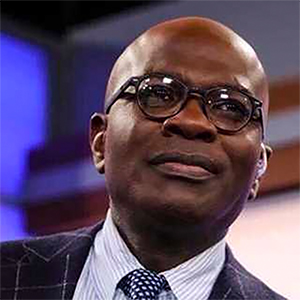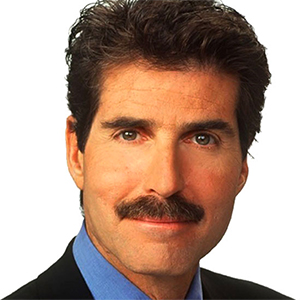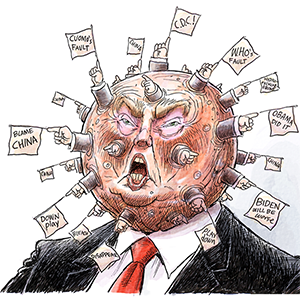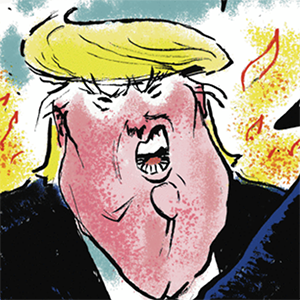Commentary: Tech is advancing. Your standard of living isn't -- Thanks to government
Published in Op Eds
Since the widespread rollout of OpenAI’s ChatGPT in late 2022, the world has begun to grapple with a wave of technological progress unlike anything seen since the advent of the internet. The pace of innovation is accelerating, self-driving cars are becoming more commonplace, and Tesla is developing a commercially available humanoid robot designed to assist with basic household tasks.
For some, this future seems dystopian; for others, it is thrilling. But one pressing question remains: Will all this innovation meaningfully improve the average person’s standard of living any time soon?
At first glance, the answer might seem obvious. Yet, it remains uncertain whether these technological advancements will meaningfully improve everyday life, at least not without significant government deregulation. Three of the most significant challenges lie in the areas of housing costs, healthcare costs, and education costs.
Take housing. Census data and inflation figures from the Bureau of Labor Statistics show that while median household income has risen by more than 45% over the last decade, inflation (excluding housing) has climbed about 21%, effectively erasing much of those income gains. Meanwhile, housing prices have surged by over 70%. In dollar terms, median home values increased from $175,000 in 2014 to $303,000 in 2023.
These increases indicate that home values have outpaced both overall inflation and income growth at a staggering rate. What was once the cornerstone of the American Dream, owning a home, now feels increasingly out of reach for many Americans.
This growing affordability crisis is echoed in demographic data from the National Association of Realtors. In 1981, the median age of a first-time homebuyer was just 29. By 2024, that number had jumped to 38, an increase of nearly a decade. Even more striking, the median age of repeat buyers rose from 36 to 61 over the same period. These figures highlight a clear shift: homeownership is increasingly delayed, turning what was once a milestone of early adulthood into a luxury reserved for late middle age.
Housing isn’t the only area where costs have exploded. A viral post on X (formerly twitter) recently featured a hospital bill from 1956 for the birth of a child. The total? Just $107—$1,280 when adjusted for inflation. Today, that same hospital birth can cost as much as $18,000, with insured patients often still paying up to $3,000 out-of-pocket.
According to the Bureau of Labor Statistics, while inflation has risen 300% since 1980, the cost of medical services has soared by over 700%. This disparity underscores a system where healthcare innovation has not translated into affordability or access for the average American.
The situation is just as troubling when it comes to education. College tuition costs have skyrocketed well beyond the pace of general inflation. As shown in the chart below, since 1980, the cost of college tuition has increased by more than 1,200%, while inflation rose over 300%. This stark divergence underscores how higher education has become dramatically more expensive in real terms.
In 1980, a year of tuition at a public four-year college averaged around $804 (around 3.3 thousand adjusted for inflation). Today, it is nearly $10,000, with private institutions charging even more. Despite advances in online learning, these innovations have not translated into affordability. Instead, many graduates leave school burdened with debt and face an uncertain job market that may not offer salaries high enough to justify the cost of their degrees.
Across college tuition, healthcare, and housing, one common thread explains much of the price explosion: government intervention, often well-intentioned, but with unintended consequences.
In higher education, the federal government’s expansion of student loan programs has poured taxpayer money into the system. With guaranteed access to loans, colleges have had little incentive to control costs, knowing students can borrow almost unlimited amounts. This demand-fueled inflation has allowed universities to build lavish amenities as administrative ranks have swelled. Meanwhile, students are left with mountains of debt and often questionable returns
In healthcare, government programs like Medicare and Medicaid have distorted pricing mechanisms, while regulatory burdens and insurance mandates have added layers of compliance costs. These policies limit competition and transparency, driving up the cost of everything from routine procedures to life-saving drugs. Even insured patients often face staggering bills due to a system riddled with inefficiencies, inflated pricing, and nontransparent billing.
In housing, zoning laws, land-use regulations, environmental reviews, and restrictive permitting processes, especially in high-demand areas, have strangled new supply. Government-imposed limits on density, height, and land use make it exceedingly difficult and expensive to build new homes, particularly affordable ones. Meanwhile, rent control and other well-meaning interventions often backfire by discouraging investment and reducing housing availability in the long run.
Together, these examples illustrate a harsh reality: when government policies interfere with market dynamics, the costs are often passed directly onto the consumer, whether it is a student, a patient, or a prospective homeowner.
Without serious reform, especially deregulation that restores market incentives, new technologies will continue to flourish in theory, while the average American sees little change in practice. If policymakers want the promise of the AI era to translate into meaningful gains in living standards, they must first get government out of the way.
_____
Alexander Frei is a senior research associate at the Center for Data Analysis at the Heritage Foundation.
_____
©2025 Tribune Content Agency, LLC.

























































Comments